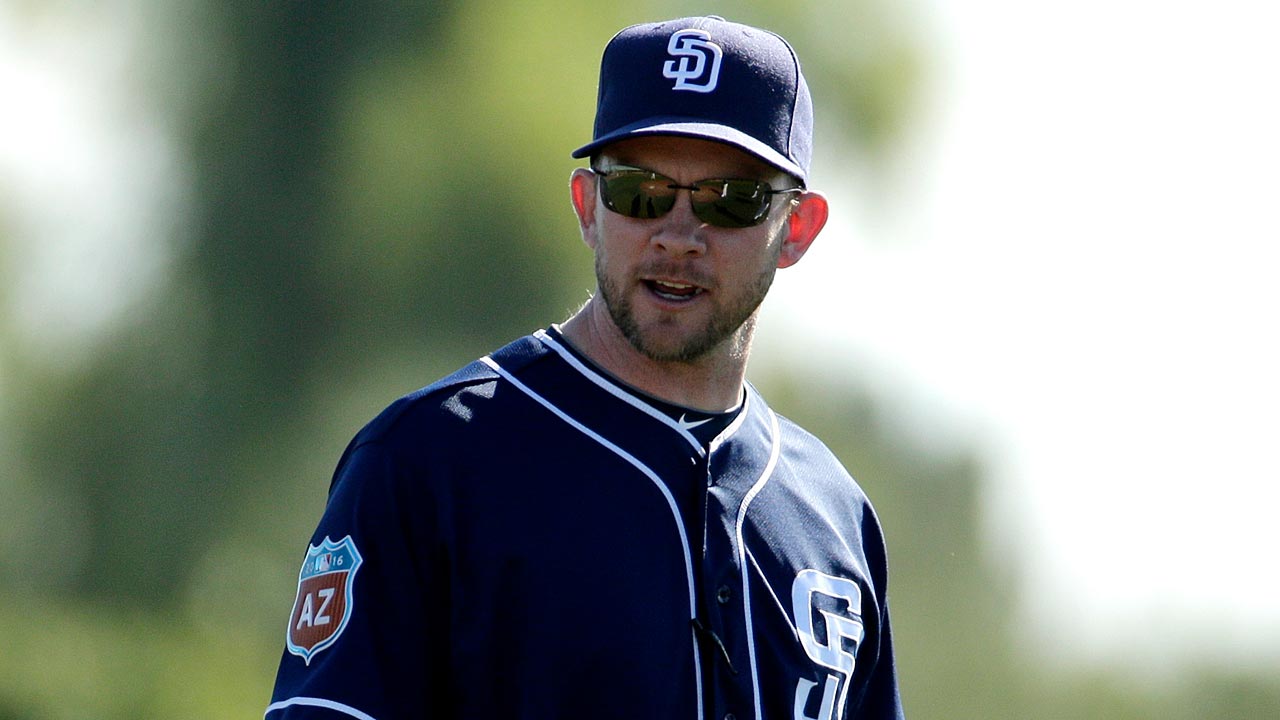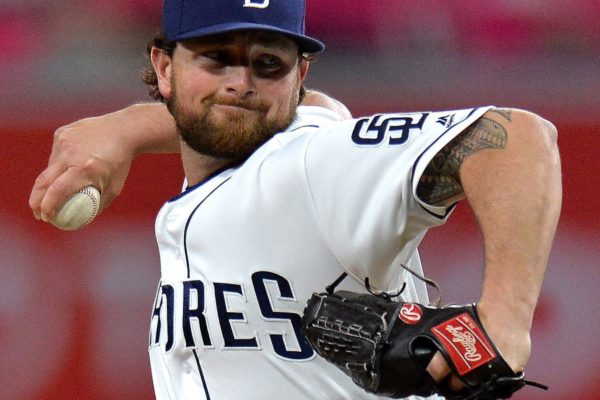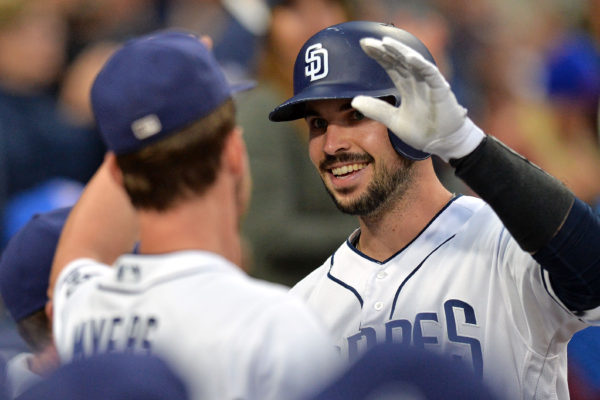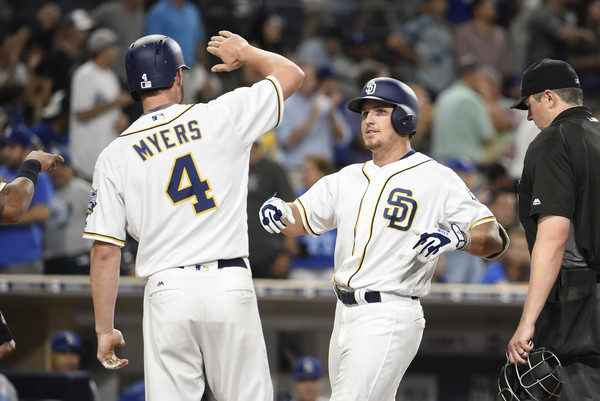The San Diego Padres Path To October Baseball

Credit: USA Today Sports

Bullpen
The bullpen is probably the most underrated part of the 2019 Padres in my opinion. Here’s a look at what they do best and need to improve on in 2019:
Kirby Yates relies on his 95 MPH fastball to get ahead of hitters and then puts them away with his splitter and hard slider. Yates had tremendous success with hitters chasing his offspeed pitches out of the zone, registering a 49.1 percent chase rate on those offerings. That was the highest percentage for qualified relievers last year. What Yates needs to improve on this season is his consistency. Whether that means conditioning or workload management, or a combination of both is the question. After the All-Star break last year, Yates stumbled to a 3.72 ERA and 1.6 HR/9. On the road that ballooned to 5.72 and 2.0, respectively.
Robert Stock averaged 97.6 MPH on his fastball last season and his 22.9 percent strikeout rate, 7.9 percent walk rate and 50 percent groundball rate all ranked above league average. He’s already a capable middle reliever, but with some additional seasoning, could become an important high-leverage asset.
Craig Stammen allowed just a .521 OPS to right-handed hitters last year. Among all relievers with at least 50 innings, his 71.6 percent first-pitch strike rate was the best in baseball. Don’t dismiss the first-pitch strike stat, 92.7 percent of first-pitch strikes lead to an out and 69 percent of first-pitch strikes lead to a strikeout. That’s huge, especially in high-leverage situations. Stammen is entering his age 35 season, and as long as he can stave off Father time, he’ll be the Padres top set-up man barring any kind of trade.
Trey Wingenter tossed 19 innings after he arrived in San Diego last year and pitched to a 3.79 ERA. The strikeouts are what the Padres love about the 24-year-old right-hander, as he produced a 33.3 percent strikeout rate. If Wingenter wants to be a viable option in the bullpen this year, he’ll have to cut down on the free passes. His 13.6 percent walk rate led to just over five walks per nine innings, which won’t play at any level.
Are Two Catchers Better Than One?
Ignore the fancy title. Of course, the Padres are going to employ a two-pronged attack here. Every MLB team uses this model. What we’re trying to decipher is how much and which one? Austin Hedges is the incumbent and will probably assume regular duty at first. It’s easy to imagine Francisco Mejia taking the lion’s share of starts as he settles in and improves defensively. So let’s try to sort out this situation.

Hedges is a mixed bag. He does some things well, mostly defensively, while he really needs to work on various other items. He’s one of the premier pitch framers in the majors and he has a strong, accurate arm. Oddly enough, even with his arm strength, he was only able to throw out 15.5 percent of runners attempting to steal, so that area needs to at least get up to the league average of 23.7 percent. He’s also flashed some decent power, hitting 32 combined home runs over the last two seasons and his .198 ISO ranked sixth among catchers with at least 300 plate appearances in 2018. As with many power bats, his swing and miss tendencies have been troubling. His 27.6 percent strikeout rate last year contributed to his batting average woes. It’s 2019, so we’re really not worrying too much about batting average, but when we look at the root cause, the contact issues are the red flag. Those same contact issues led to another problem: Hedges only hit .182 with runners on base last year. The league average was .264, so improving contact is obviously the key ingredient for a positive year at the plate for Hedges.
Mejia’s biggest task right now is convincing the Padres that he can stick behind the plate. His bat is major league ready and will play at any position on the field. That’s great, but this year he’s needed behind the dish. So he’ll have to cut down the 32.8 percent strikeout (58 PA) rate he posted with San Diego in 2018 to buffer his defensive issues for now. The other hot item that he’ll need to work on is his penchant for chasing pitches outside of the strike zone. In his brief big league career, Mejia has chased pitches at a 50 percent clip, contributing to his 75 percent contact rate. I have confidence that those issues will be resolved due to his elite barrel control and seeing major league pitching on a regular basis. So what the Padres need Mejia to improve on this season, outside of his work behind the plate, is simply improving his below-average pitch recognition.
Sorting Out The Outfield
Unfortunately, the injury to Travis Jankowski helps to clear this up a bit, but his glove will be missed. That leaves five players to battle for three spots, if we’re being honest, all five will most likely play a role during the 2019 campaign. In my opinion, the Opening Day starting outfield should be Hunter Renfroe and Franmil Reyes in the corners and Wil Myers patrolling center field. That’s the best set up for my money. That leaves Manuel Margot and Franchy Cordero on the outside looking in. There’s always a chance Margot could be traded, but what exactly is his value right now? His .292 OBP last year was 15th worst among 144 qualified hitters according to Inside Edge. To make matters worse, he’s only accrued a .300 OBP over 1,085 career plate appearances. He’s also starting to build a reputation for his inability to hit a fastball, as he’s slugged just .349, which ranked third worst in 2018. The good news is that he’s only 24 and another team may value his potential enough to strike a deal. That would be optimal for the Padres. The other issue for the Padres is finding a way to carve out some time for Cordero. He’ll need to improve his defense to gain some at-bats, which should be attainable considering the type of athlete he is. His ability to make contact will need to improve drastically as his strikeout rate hasn’t dipped below 25 percent since 2015 in Single-A Fort Wayne.

Myers is certainly athletic enough to make center field work and he actually had some work there in the minors. He recorded his highest average exit velocity (90.3 MPH) of his career in 2018 despite his injuries, so that’s a positive piece to build on. One concern that he’ll need to address is his dip in launch angle last season. His average launch angle fell from 15 degrees in 2017 to 9 degrees in 2018. The Padres are battling that demon right now with Eric Hosmer, so a positive correction from Myers would be a huge plus heading into the season.
Hunter Renfroe cut down on his swing and miss in 2018 and increased his Isolated Power to .256, up twenty points from the previous year. He ended 2018 with 100 total hits, 50 of which went for extra bases. He also improved greatly vs RHP, slugging 18 of his 26 home runs against right-handers and raising his line to .245/.293/.510 from .202/.244/.393 in 2017. He’ll need to continue the upswing in production and it’s easy to speculate a 30-35 HR season from Renfroe with expanded playing time.
Franmil Reyes has the raw power that only a few players in MLB can match. He crushed lefties to the tune of a .602 slugging percentage in 2018 and had the 21st hardest-hit ball (115.4 MPH) last year as well. His 28.1 percent strikeout rate is a bit of a concern, but with his elite raw power, that’s something the Padres can live with. He’ll need to improve against right-handers (.247/.298/.449) or he could find himself on the wrong side of a platoon as the season unfolds.
Kurt resides in Fort Wayne, Indiana with his wife and two boys. He enjoys attending TinCaps games and promises to deliver original, informative and sometimes analytical content as part of the EVT team.
You’re right about the offense being terrible last year. However we can expect improvement at 3B (uh, we signed some guy), SS (Tatis), 2B (Urias), 1B (bounce back from Hosmer), RF (full season of Reyes), LF (Myers is better than Renfroe) and maybe even at C (adding Mejia, some improvement from Hedges). That’s better offense from 7 positions. We won’t need to play Myers in CF to be a better offensive team. Add in the injury risk to Myers is much greater in CF.
You had me until you got to the OF, and then you went completely off the rails. You ding Margot for a .300 OBP, but that’s higher than Renfroe’s. You think Myers can handle CF, neglecting to mention that was tried in 2015 and abandoned due to the horror of it all.
Margot is all of 24, a quality defender and still with potential, better to stick with him for another year. Renfroe is 27, so he most likely is what he is, and what he is a one-trick pony. Power and not much value in any other aspect of the game. Plus he was already demoted once for essentially being uncoachable. Any edge gained by batting Myers instead of Margot will be given right back on defense.
Remember the parks we play most of our games in. SD, LAD, SF, COL, ARI. All pitchers parks with big OFs. It makes more sense to play Margot in CF and Myers in LF and Renfroe in AAA.
And with a young staff, go with the best CFer and give up a bit of offense.
I see your point of giving up offense for a better CF, which Margot is defensively, but this team can’t afford to give up runs. In fact they don’t have any to give. They finished 12th & 13th respectively in the NL in HRs & wRC+ last season. As far as Myers, they gave him 38 games in 2015, which he battled a wrist injury and eventually had surgery. He’s arguably the best athlete on the team, he needs to play. Renfroe’s one trick is power – 26 HR in 441 PA’s, that will play. I’ll take that trick any day and remember, he’s heading into just his 3rd full year, so that age 27 thing doesn’t really apply. There’s adjustments to be made. I’m all for Margot taking the spot if he can earn it. His thing is speed, he needs to learn to use it at the major league level. He’s been thrown out 36% of the time on steal attempts. Maybe he can find some pop along the way as well.
The rest of baseball no longer judges a player by HRs. See what Fangraphs thinks:
https://blogs.fangraphs.com/2019-positional-power-rankings-left-field/